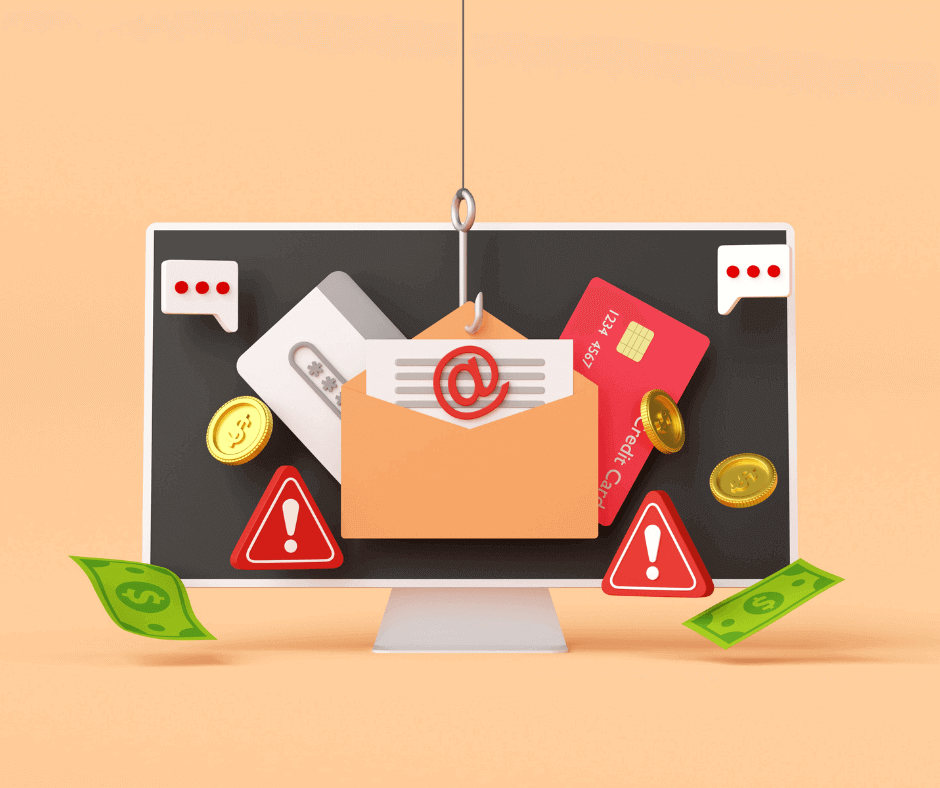Would You Notice If Your Payroll Was Paying Someone Who...
Read More
Direct deposit phishing scams are becoming a growing threat to both individuals and businesses. Disguised as a legitimate request to change/update direct deposit information. Cybercriminals attempt to trick victims into “correcting” bank account details by hacking and cloning email accounts. Financial losses, identity theft, and other serious consequences can result from these scams. However, there are precautions that can be taken to protect against direct deposit phishing scams and prevent them from causing harm.
Step 1: Educate Yourself and Others
One of the most crucial steps in preventing direct deposit phishing scams is to educate yourself and your employees on the warning signs of a phishing attempt. Emails or text messages requesting to update personal or financial information, containing urgent or threatening language, or coming from an unfamiliar or suspicious sender are common indicators of a phishing attempt. Even more tricky is the “sender” can look very similar to the hacked email owner. If the email signature looks different from the past signatures, beware of the email. Furthermore, be cautious of emails or messages that contain links or attachments, as these may contain malware or other malicious software.
Step 2: Involve IT Services for Help
Require IT administrators to keep an eye out for any unusual activity, such as a sudden increase in the number of accounts with their contact and banking information changed. If any banking information is changed for an employee, have a policy that temporarily switches the employee back to paperchecks.
Step 3: Verify the Source
If you receive an email or text message claiming to be from your bank or employer, verify the authenticity of the message by contacting the organization directly using the contact information provided on their official website. Do not verify the information by responding to the email sent, this will only go to the scammer. Start a new email or even better pick up the phone and call the individual to verify the change.
Step 4: Implement Strong Security Measures
Implementing strong security measures, such as two-factor authentication and password management tools, is another critical step in preventing direct deposit phishing scams. To access their accounts, users must provide two types of authentication, such as a password and a security code sent to a mobile device, using two-factor authentication. Even if a password is compromised, this helps to ensure that only authorized users have access to sensitive information.
Along with two-factor authentication, password management tools can also play a crucial role in preventing direct deposit phishing scams. These tools enable users to generate and securely store strong and unique passwords for all their accounts, minimizing the possibility of a password being stolen or breached and consequently used to gain unauthorized access to confidential data.
Step 5: Stay Informed With the Latest Threats and Security Best Practices
Staying up to date on the latest threats and security best practices is another important step in preventing direct deposit phishing scams. This can be accomplished by reading reputable cybersecurity blogs and news sources and attending cybersecurity conferences and training sessions. Individuals and businesses can be better prepared to identify and respond to phishing attempts before they cause harm by staying up to date on the latest threats and best practices.
Step 6: Report any Suspicious Activity
Lastly, it is crucial to report any suspected phishing attempts to the relevant authorities. This involves notifying your bank or financial institution and filing a report with the Federal Trade Commission (FTC) or other law enforcement agencies as appropriate. By doing so, individuals and businesses can help to prevent further damage and hold perpetrators accountable for their fraudulent activities.
Bottom Line:
In conclusion, direct deposit phishing scams pose a significant threat, capable of causing financial losses, identity theft, and various other severe outcomes. If you use a payroll service, never allow them to update employee information that is sent to them directly. All employee updates or changes should come from the employer, never directly from the employee to the payroll service. By being aware of the warning signs of phishing attempts, implementing strong security measures, keeping up with the latest cybersecurity trends and best practices, and promptly reporting any suspicious incidents, you can help prevent these scams from causing harm. Remember that remaining observant, informed, and proactive when it comes to security measures is key to effectively preventing direct deposit phishing scams.
Tessa joined Superior Trucking Payroll Service in September 2022. She loves to write and make videos which made her a great asset to the team in her marketing position.
Before working at Superior Trucking Payroll Service she worked in IT at GVSU which gave her the skills to problem-solve with customers over the phone.
Contact Us!
7 Smart Money Moves to Keep Your Trucking Company Profitable
Are you constantly waiting on payments while your bills pile...
Read MoreSecure Online Access to Your Pay Stubs and Tax Documents
As a truck driver, you know that every dollar counts....
Read MoreThe Trucking Payroll People Have a New Partner – Trucking Compliance Just Got Easier!
Helping Trucking Companies Find the Best Compliance Solutions DOT compliance...
Read MoreTrucking Wages Rise: February 2025 Driver Pay Index
Why does truck driver pay drop in January? Will the...
Read More
